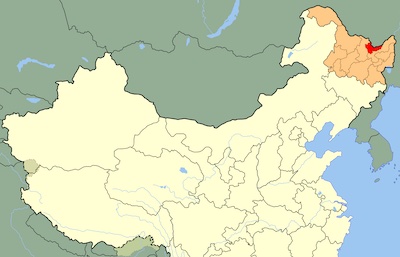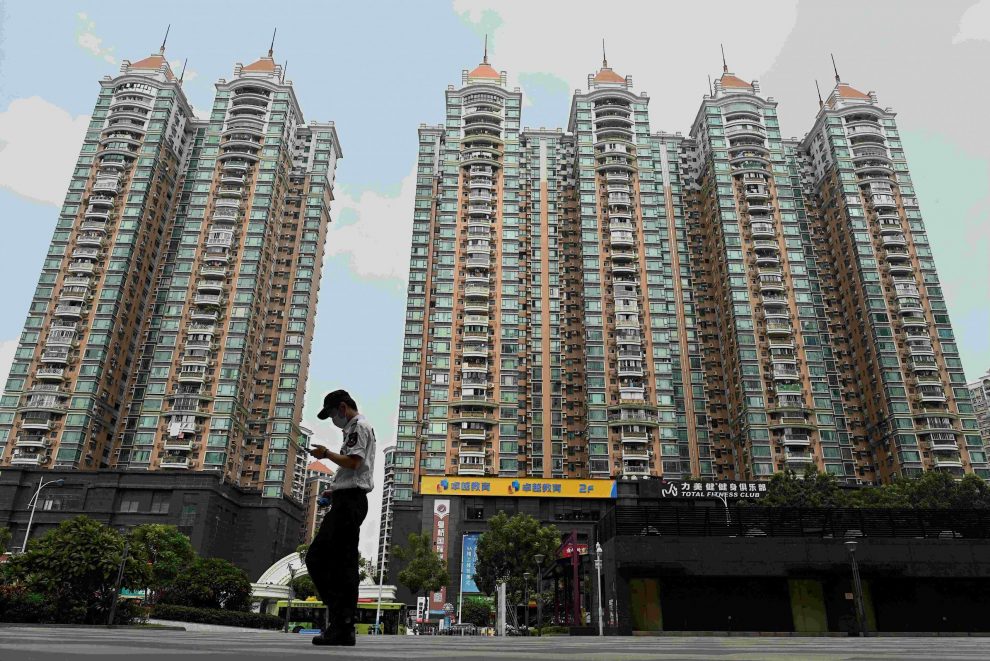On the southern bank of the Amur river that runs along the Russian border is one of the most affordable property markets in China. Where the average two-bedroom flat in Beijing can cost $1 million, investors can snap one up in the city of Hegang for $10,000.
Dependent almost entirely on coal mining, the economy of Hegang – shown in red in the map below – has been on the ropes for years. The coronavirus pandemic appeared to push it over the edge.
On December 23, local officials announced the city in Heilongjiang province has frozen hiring and begun fiscal restructuring. That may be a first for China, but it’s unlikely the last.
While coastal provinces with strong export sectors have weathered the Covid-19 outbreak relatively well, local governments in the interior have been under heavy economic stress.
 That was only aggravated by Beijing’s decision to rein in the real estate market. Not only has it driven homebuilders like Evergrande to log spectacular defaults, it has depressed the land sales that contribute an estimated one-third of cities’ fiscal revenue on average.
That was only aggravated by Beijing’s decision to rein in the real estate market. Not only has it driven homebuilders like Evergrande to log spectacular defaults, it has depressed the land sales that contribute an estimated one-third of cities’ fiscal revenue on average.
This means that even as developers default on bonds and trade credit, and leave projects half-finished, China’s infamous army of local government finance vehicles (LGFVs) could start going belly up next.
An April document from the state cabinet suggested dysfunctional ones should be allowed to go bankrupt. Their outstanding debt amounted to $8 trillion at the end of 2020, Goldman Sachs estimated, equivalent to around half of China’s gross domestic product.
Last year they also replaced property developers as the biggest Chinese debt issuers offshore, with $31 billion of dollar bonds coming due in 2022.
Political Oddity
LGFVs are a policy oddity. They were invented, more or less, during the global financial crisis of 2008 to let officials get around a central ban on direct borrowing by local governments, allowing localities to quickly raise debt for stimulus.
Today they exist in a policy grey area, created by and for official use but not technically guaranteed. Many of them hold assets of dubious quality: roads to nowhere, empty airports.
Reforms to the provincial bond market in 2015 were supposed to make them unnecessary, yet they are still around, and many are heavily involved in primary land development before parcels are sold to developers, making them direct victims of stalled bids and cooling prices.
A lot of their debt got repackaged into wealth management products sold to ordinary people. They are also big borrowers from small banks.
Now land sales are forecast to fall another 20% this year after a bruising 2021, according to S&P Global Ratings.
Yet despite Beijing’s recent tolerance of defaults by state-owned enterprises, and despite many LGFVs’ obvious lack of profitability and dubious governance, some investors remain convinced they will be protected.
Local ratings agencies have awarded investment grades to those with very weak credit profiles, a November analysis by CreditSights showed.
As with property developer Shimao Group, which was rated investment grade until it suddenly started to default in January, the risk is less that high-yielding, junk-rated LGFV bonds fall over, but that lower-yield issues from wealthy regions are mispriced too.
Billions Due This Year
It’s getting harder, after all, to kick the can down the road as renewed Covid-19 outbreaks flare up from Xi’an to Tianjin.
In Lanzhou, capital of Gansu province, 14 billion yuan ($2.2 billion) of LGFV bonds are coming due this year, equivalent to almost half of the city’s 2021 fiscal revenue, according to S&P.
Regulators are capping LGFV domestic bond issuance and preventing those from poorer regions from participating, Chinese media have reported, which will make rolling over existing debt harder. Some will try to dump assets, but might not be easy.
As with real estate, there is a question about how tough Beijing can be on the poorest parts of the country as the wider economy wobbles.
But if the central government wants to stimulate growth, it must rely on cities and towns to do their part. Some do have the ability to raise funds via targeted bonds specifically for infrastructure spending, but others will need a lifeline just to stay afloat. Either way, investors and lenders will have to watch their step.
• Reuters with additional editing by Jim Pollard
ALSO SEE:
China to Fast-Track 102 Projects as Economy Slows – SCMP
China’s Omicron-Hit Tianjin Rolls Out Fresh Round of Tests
Shimao Puts All Projects On Sale as China Property Woes Deepen
China Evergrande Default Triggers Brawl Over Local Assets
WATCH MORE:






















